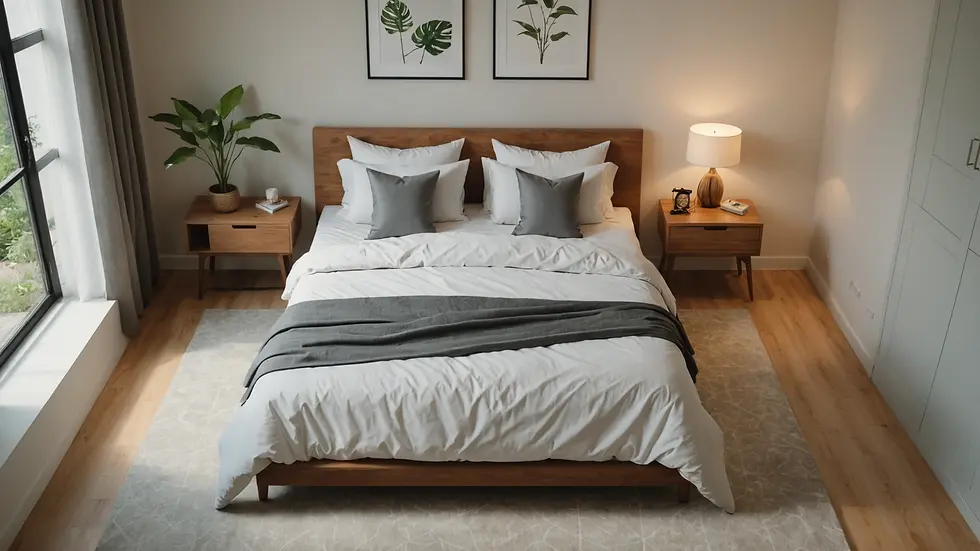How to Declutter Your Life: A Practical Guide to Living with Less Stress and More Space
- Robin Pufunt

- Apr 24
- 4 min read
Living clutter-free is more than just a trendy phrase; it’s a choice that can significantly improve your mental well-being and home environment. In a world filled with distractions and material possessions, finding a simpler and more organized way to live is crucial. This guide will walk you through effective steps to reduce clutter in your life, leading to a happier and less stressful existence.
Understanding Clutter
Before getting into the practical steps of decluttering, it’s vital to understand what clutter truly means. Clutter extends beyond physical items overflowing in your space; it includes lingering thoughts and emotional baggage. Holding onto things that no longer serve a purpose, or keeping unresolved issues in your mind, often leads to increased anxiety and stress.
Recognizing the impact of clutter—both physical and mental—is the first step in your journey toward a simpler, more fulfilling life.
The Benefits of Reducing Clutter
Reducing clutter offers many benefits that affect your overall well-being. Here are some key advantages:
Less Stress: A tidy environment can greatly diminish anxiety levels. In fact, research indicates that 60% of individuals feel less anxious when they live in a clean space.
Improved Focus: A clutter-free environment lowers distractions. According to a study from the Princeton Neuroscience Institute, clutter can actually hinder your ability to focus.
More Space: Clearing out unnecessary items opens up physical space in your home, making it feel larger and more inviting.
Better Mental Health: Simplifying your surroundings can enhance your emotional well-being, providing a satisfying sense of accomplishment. Studies show that 77% of those who declutter their homes see improvements in mental clarity.

Get Started: Creating a Plan
With these benefits in mind, the next step is to create a decluttering plan. Here’s how to begin:
1. Set Clear Goals
Pick specific areas in your home to tackle first. Whether it's your bedroom, kitchen, or garage, having clear targets can help maintain motivation. For example, focusing on your closet may only take an hour, while your garage might require a full weekend.
2. Dedicate Time
Schedule specific time slots for decluttering. Start with short, manageable sessions of 20-30 minutes, then gradually extend as you become more comfortable with the process.
3. Gather Supplies
Collect boxes or bins to sort items. Label them "Keep," "Donate," "Sell," and "Trash." This labeling will make the decision-making process smoother and clearer.
The Decluttering Process
With a plan in place, let's delve into the practical steps for reducing clutter:
1. Start Small
Choose a small area to begin with. Tackling an entire room can feel overwhelming. Instead, start with one drawer, one shelf, or even one corner. For instance, decluttering a single kitchen drawer can yield significant results in just 30 minutes.
2. Assess Each Item
As you examine your belongings, ask if each item is necessary. Does it bring you joy? Do you use it regularly? If not, consider letting it go. The popular Japanese method of tidying suggests keeping only items that "spark joy."
3. Implement the One-Year Rule
If you haven't used an item in over a year, it’s likely time to discard or donate it. This rule helps prevent emotional attachments from clouding your judgment.
4. Organize as You Go
Once you decide what to keep, find a dedicated spot for each item. Use storage solutions that suit your space—consider clear bins, shelving units, or drawer organizers.

5. Use the “Four-Box Method”
This method involves sorting items into four boxes: "Keep," "Donate," "Sell," and "Trash." It is an effective way to make decisions while minimizing mental clutter, allowing for clarity throughout the process.
Maintaining a Clutter-Free Lifestyle
After you’ve decluttered, maintaining your progress is vital. Here are some strategies to keep your space organized:
1. The One-In, One-Out Rule
For each new item you bring into your home, remove an existing one. This practice prevents clutter from building up over time, ensuring your space remains manageable.
2. Regular Check-Ins
Set aside time for periodic decluttering sessions, even if they are short. Regularly revisiting your space helps keep clutter in check.
3. Create a “Clutter Zone”
Designate an area in your home for items that need attention. This will help contain messes and facilitate organization efforts.
The Impact on Mental Health
Living clutter-free greatly benefits your mental well-being. By reducing physical clutter, you may experience:
Enhanced mood.
Lower levels of anxiety and depression.
A clearer mind, free of distractions.
When your environment embodies simplicity and peace, it lays the groundwork for a healthier mindset.
Embracing a Clutter-Free Life
Living a clutter-free life is about more than just organization; it’s a comprehensive way to elevate your home and mental health. By actively reducing clutter, you'll craft an enjoyable and stress-free environment.
Take the process to heart, and remember that progress is made step by step. As you cultivate a space that radiates tranquility, you may find every aspect of your life improving as well.

Whether you wish to enhance your mental health, reduce stress, or create a more enjoyable living space, the journey to a clutter-free life is within reach. Happy decluttering!

For more tips on organizing visit my website at www.beautifulhomeorganizing.com.



Comments